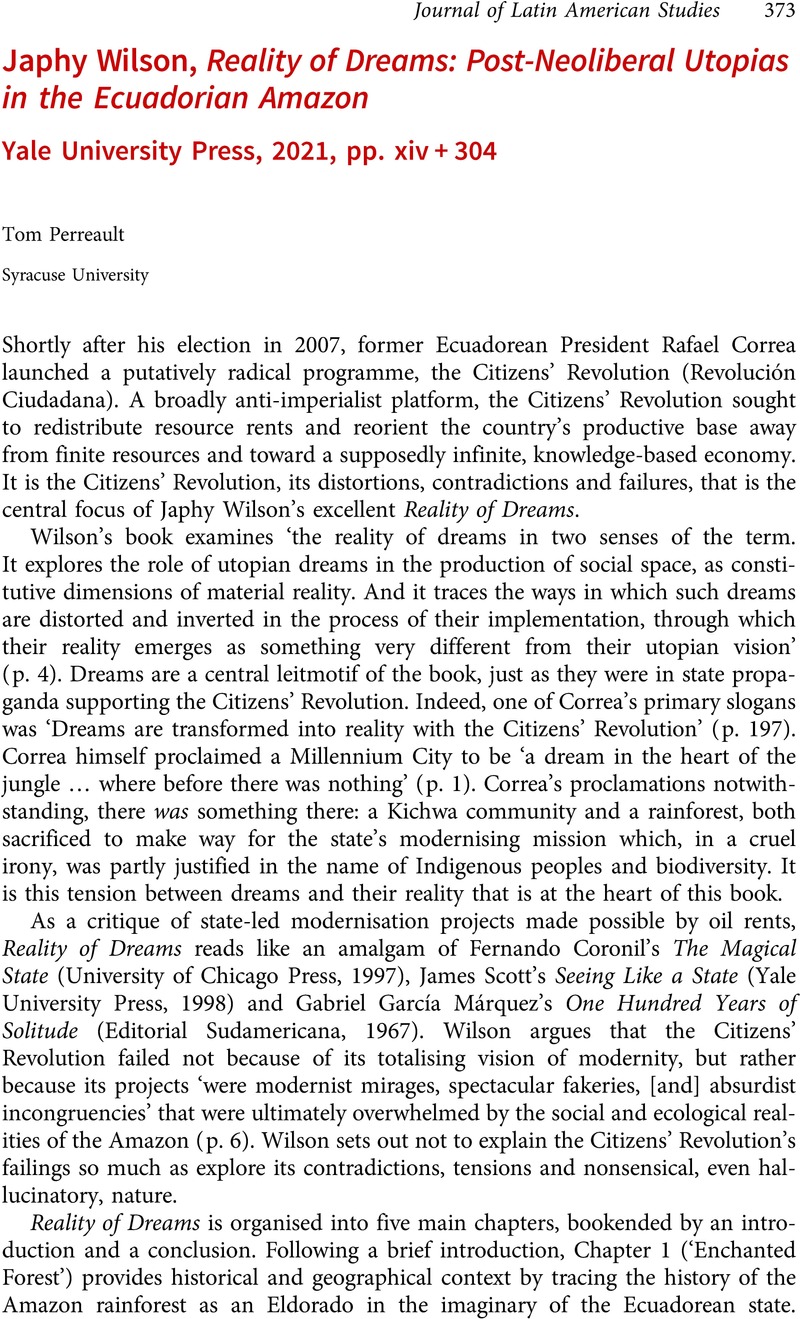No CrossRef data available.
Article contents
Japhy Wilson, Reality of Dreams: Post-Neoliberal Utopias in the Ecuadorian Amazon Yale University Press, 2021, pp. xiv + 304
Review products
Japhy Wilson, Reality of Dreams: Post-Neoliberal Utopias in the Ecuadorian Amazon Yale University Press, 2021, pp. xiv + 304
Published online by Cambridge University Press: 19 June 2023
Abstract
An abstract is not available for this content so a preview has been provided. Please use the Get access link above for information on how to access this content.

- Type
- Reviews
- Information
- Copyright
- Copyright © The Author(s), 2023. Published by Cambridge University Press



